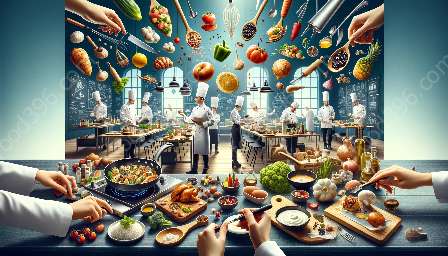Braising is a cooking technique that involves searing meat or vegetables at a high temperature and then finishing the cooking process in a covered pot with a flavorful liquid. This method of cooking is important in culinary training as it imparts essential skills and knowledge about flavor development, texture enhancement, and the art of creating soul-satisfying dishes.
The Process of Braising
When braising, the food is typically first seared at a high temperature to develop a browned exterior and seal in the juices. Once the initial searing is complete, the food is then placed in a covered pot with a small amount of liquid, such as broth, wine, or stock, and slow-cooked at a low temperature. This results in tender, flavorful, and succulent dishes.
Flavor Development
Braising is a process that brings out the natural flavors of the ingredients and allows them to meld together with the added liquid and aromatics. The slow cooking time allows for the flavors to intensify and develop, resulting in rich, deep, and complex tastes that elevate the dish to a new level.
Texture Enhancement
Braising also transforms tougher cuts of meat and fibrous vegetables into tender, melt-in-your-mouth goodness. The low and slow cooking method breaks down the connective tissues in meat, resulting in a luscious, fork-tender texture. Similarly, vegetables become soft, yet retain their shape and absorb the flavorful liquid.
Braising in Culinary Training
Aspiring chefs are taught the art of braising early in their culinary training. This method helps students understand the science behind cooking and the impact of heat, time, and moisture on ingredients. It also instills the importance of patience and the art of letting flavors develop slowly over time.
Braising in Cooking Methods
Braising is a fundamental cooking technique that can be applied to a wide range of dishes, from classic coq au vin and pot roast to innovative vegetarian stews and braised tofu. It can be used with different types of meat, poultry, seafood, and vegetables, making it a versatile method for creating hearty and flavorful meals.
Culinary Benefits of Braising
Beyond the development of flavors and textures, braising offers other advantages such as cost-effectiveness. Tougher and less expensive cuts of meat become tender and delicious through this method, making it an economical choice for restaurants and home cooks alike.
Moreover, braising allows for batch cooking, as the dishes can often be prepared in advance and reheated without sacrificing flavor or texture. This is particularly beneficial in professional kitchens and for busy individuals who desire convenient yet satisfying meals.
Conclusion
Braising is a timeless cooking technique that continues to play a vital role in culinary training and cooking methods. It not only imparts essential skills and knowledge to aspiring chefs but also elevates the dining experience for food lovers by creating dishes that are flavorful, tender, and soul-warming.

